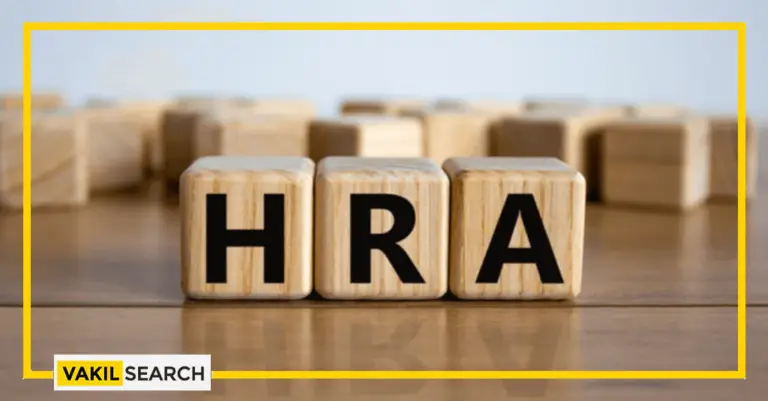Learn how HRA is calculated for government employees with our informative guide. Discover the factors that influence HRA calculation, the types of HRA available, and the latest rules and regulations. Plus, find out how to calculate HRA for different categories of cities and claim tax benefits and exemptions.
7th Pay Commission House Rent Allowance for government employees is a crucial component in India. HRA is a payment made by the government to its employees to cover their accommodation expenses. HRA is an essential component of the salary package for government employees as it helps to alleviate the burden of housing expenses. In this article, we will delve deeper into the concept of HRA for government employees and understand its various aspects.
As a government employee, you are entitled to various benefits and allowances, and one of them is the House Rent Allowance (HRA). HRA is an allowance provided to employees to help them meet their accommodation expenses. House Rent Allowance for government employees is an important allowance as it helps them meet their accommodation expenses. The cost of living in cities is high, and HRA helps employees to cope with the high cost of renting a house. HRA is also an essential component of the salary package, and it is taxable. Therefore, it is crucial to understand how HRA is calculated and the rules and regulations related to it.
The purpose of this blog is to provide government employees with a clear understanding of how HRA is calculated, the rules and regulations related to it, and the process of claiming HRA. The blog aims to help employees make informed decisions about their HRA and avoid any mistakes while claiming it. By the end of this blog, you will have a comprehensive understanding of HRA and be able to calculate it accurately.
Eligibility for House Rent Allowance
To be eligible for HRA, an employee must fulfill the following criteria:
- The employee must be a government employee who does not have government accommodation or has not been provided with company-owned accommodation.
- The employee must be receiving a salary component for HRA.
- The employee must be paying rent for the house he/she is residing in.
Types of House Rent Allowance
There are three types of HRA:
- Basic HRA: This is the standard HRA that is provided to employees. It is calculated as a percentage of the basic salary and can vary depending on the city of residence.
- Special HRA: Special HRA is given to employees who reside in cities that have a high cost of living. It is an additional allowance that is provided over and above the basic HRA.
- Additional HRA: Additional HRA is given to employees who have a higher rent expense than the basic HRA. It is provided to employees who reside in cities where the rent expenses are high, and the basic HRA is not sufficient to cover the rent expenses. The additional HRA is calculated as a percentage of the basic salary.
It is essential to note that the total HRA received by an employee is subject to income tax.
7th Pay Commission House Rent Allowance (HRA)
The House Rent Allowance (HRA) introduced by the 7th Pay Commission is a crucial component of government employees’ salaries. The 7th Pay Commission House Rent Allowance is designed to assist employees in meeting their housing expenses. The HRA is calculated based on factors such as the employee’s grade pay and the city or town of their posting. By tailoring the allowance to the cost of living in different locations, the commission ensures that employees receive fair and equitable compensation for their housing needs.
List of HRA Rates in the 7th Pay Commission
The 7th Pay Commission provides a comprehensive list of HRA rates, taking into account various factors. These include the employee’s grade pay and the city or town of their posting. The rates vary to accommodate the diverse cost of living across different locations. The 7th Pay Commission House Rent Allowance approach ensures that government employees receive suitable compensation, recognizing the financial nuances associated with residing in different areas.
Siachen Allowance
Siachen Allowance is a specialised allowance granted to military personnel deployed in the challenging and extreme conditions of the Siachen Glacier. This glacier is one of the highest battlegrounds globally, and the allowance acknowledges the exceptional hardships and risks associated with service in such harsh environments. It reflects the government’s commitment to recognizing and compensating the unique challenges faced by military personnel.
Tough Location Allowance
The Tough Location Allowance is an additional compensation provided to employees working in locations characterised by difficult terrain, extreme weather conditions, or other challenging circumstances. This allowance acknowledges the extra challenges faced by employees in such demanding postings. It ensures that individuals working in areas with specific challenges receive fair and appropriate compensation for their service.
National Council JCM Staff Side Recommendation on HRA
The National Council Joint Consultative Machinery (JCM) Staff Side plays a crucial role in representing the interests of government employees. Understanding their recommendations on House Rent Allowance provides insights into ongoing dialogues and advocacy for fair and beneficial compensation policies for employees. This reflects the collaborative approach taken by the government in addressing employee concerns and continuously improving compensation structures.
Calculation of HRA for Different Categories of Cities
The calculation of HRA is different for different categories of cities.
- Metro Cities: Metro cities include Mumbai, Delhi, Chennai, Kolkata, Hyderabad, and Bangalore. The HRA percentage for metro cities is generally 24% of the basic pay.
- Other Cities: Other cities include cities that are not categorised as metro cities. The HRA percentage for other cities is generally 16% of the basic pay.
- Rural Areas: The HRA percentage for employees residing in rural areas is generally 8% of the basic pay.
Example Calculations
Let’s assume that an employee’s basic pay is ₹ 50,000 and he/she is residing in a metro city. The calculation of HRA for this employee would be as follows:
HRA = Basic Pay x HRA Percentage / 100
= 50,000 x 24 / 100
= ₹ 12,000
Similarly, if an employee’s basic pay is ₹ 30,000 and he/she is residing in a rural area, the calculation of HRA for this employee would be as follows:
HRA = Basic Pay x HRA Percentage / 100
= 30,000 x 8 / 100
= ₹ 2,400
It is important to note that HRA is calculated on a monthly basis, and the HRA received by the employee is subject to income tax.
Rules and Regulations Related to HRA for Government Employees
The Central Government has set guidelines for the payment of HRA to government employees. These guidelines include:
- The employee must be a government employee who does not have government accommodation or has not been provided with company-owned accommodation.
- The HRA percentage varies depending on the city of residence, as mentioned in the previous section.
- The HRA should not exceed the actual rent paid by the employee.
- If the employee is residing in a house owned by his/her spouse, the employee is not eligible for HRA.
- The HRA received by the employee is subject to income tax.
Tax Benefits and Exemptions
Government employees can claim tax benefits and exemptions on the HRA received. The tax benefits and exemptions are as follows:
If the employee receives HRA and is residing in a rented accommodation, he/she can claim tax exemption under Section 10(13A) of the Income Tax Act. The exemption is the minimum of the following:
- Actual HRA received
- Rent paid minus 10% of the basic pay
- 50% of the basic pay if residing in a metro city or 40% of the basic pay if residing in a non-metro city
If the employee is not receiving HRA but is paying rent for the accommodation, he/she can claim tax deduction under Section 80GG of the Income Tax Act. The maximum deduction that can be claimed is ₹ 5,000 per month or 25% of the total income, whichever is lower.
It is important to note that the employee must provide proof of rent payment to claim tax benefits and exemptions on HRA.
Conclusion – 7th Pay Commission House Rent Allowance
Vakilsearch provides an HRA calculator to assist employees in computing their HRA tax benefits according to their salary structure, rental payments, and city of dwelling. This user-friendly tool is easily accessible from any location with an internet connection, and it offers accurate calculations, saving time and effort. Additionally, it is affordable and completely free, making it an ideal choice for all employees who desire an accurate assessment of their HRA tax benefits.
FAQs on 7th Pay Commission House Rent Allowance
1. What is the maximum HRA limit?
The maximum House Rent Allowance (HRA) limit depends on the employee's salary and the city of residence. Typically, it is calculated as a percentage of the basic salary, ranging from 40% to 50%, based on the city's classification.
2. How much HRA can be claimed without proof?
Employees can claim HRA without providing proof of rent up to a certain limit. However, if the claimed HRA exceeds a specified amount (usually Rs. 3,000 per month), supporting documents such as rent receipts and the landlord's PAN details may be required for verification.
3. Who is not eligible for HRA?
Individuals living in accommodations owned by them or not paying rent are generally not eligible for HRA. Additionally, if someone resides in a city not classified for HRA purposes, they may not be eligible for this allowance.
4. What happens if HRA is not claimed?
If an employee does not claim HRA or fails to provide the necessary documentation for verification, they may miss out on potential tax benefits. HRA is a valuable component that helps reduce taxable income, and unclaimed HRA means a higher taxable income for the employee. It is advisable to ensure accurate documentation and timely submission for entitled benefits.
Also, Read:










